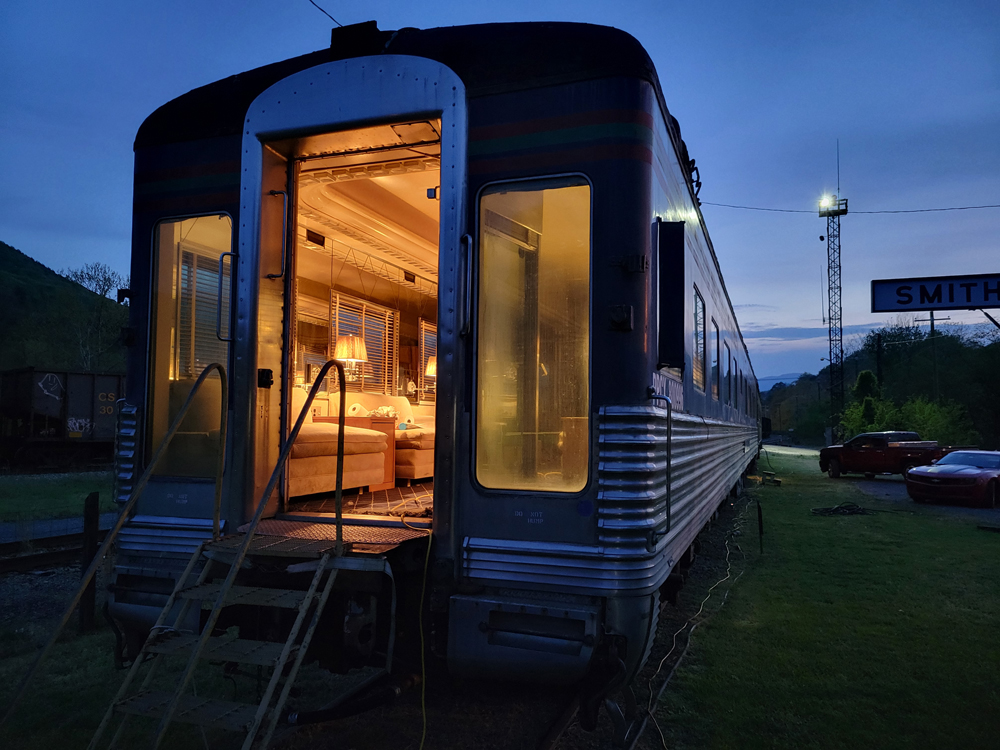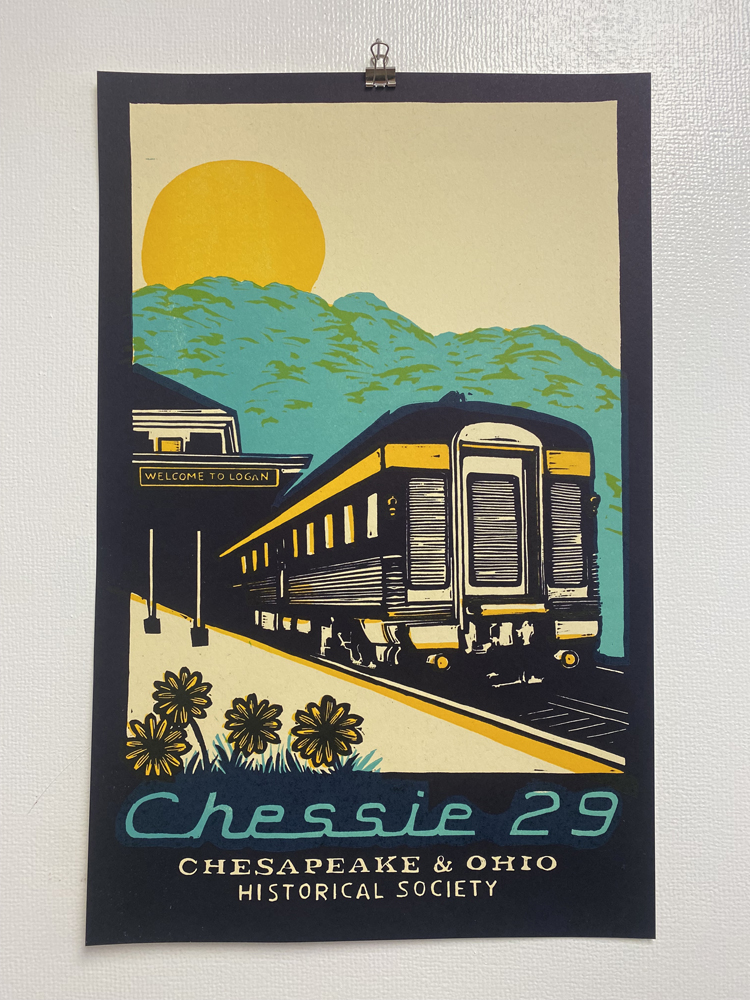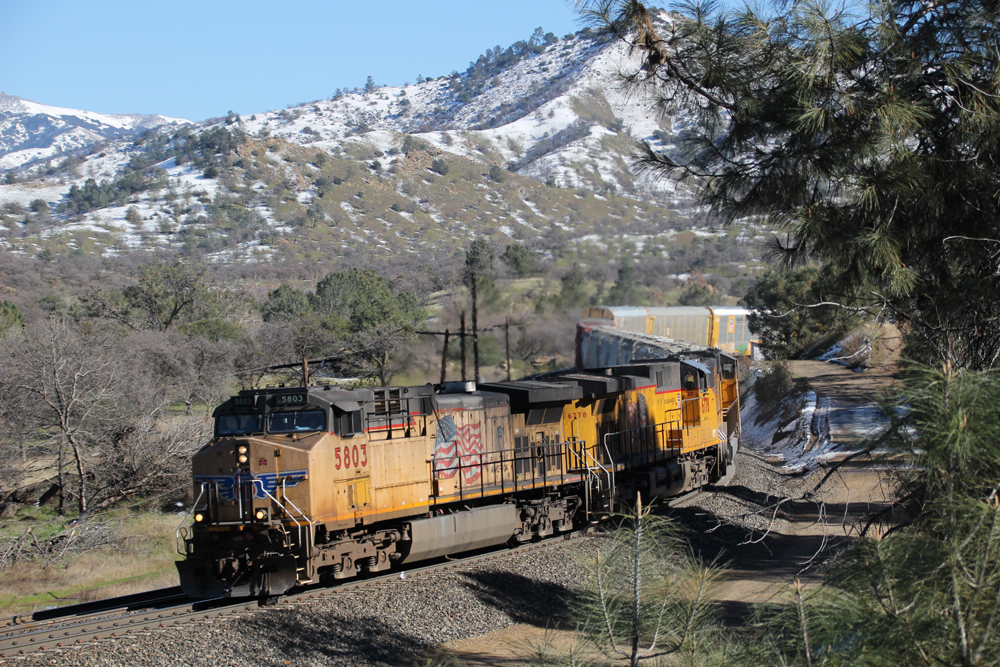
CLIFTON FORGE, Va. — The Chesapeake & Ohio Historical Society has begun a fundraising campaign to return historic C&O office car Chessie 29 to operation, organization president Mark Totten has announced.

The society will sell a custom, limited-edition, 11-by-17-inch poster of the car from Base Camp Printing of Charleston, W.Va., to fund the hiring of a renovation contractor. The posters are $75 each.
According to Totten, the organization’s goal is to return the historic private car to operation so that it can serve as a traveling museum and classroom. “I would like to have major fundraising complete by late 2024,” he said, “with a project plan approved by our board of directors by spring 2025.”
Walter Tuohy chose Chessie 29 as his personal car when he became C&O president in 1948 and hosted a wide range of dignitaries on board, including Queen Juliana and Prince Bernhard of the Netherlands on a trip to Michigan in 1952 and President Dwight D. Eisenhower on a trip to White Sulphur Springs, W.Va., in 1956. During this trip, the two agreed to build a secret bunker beneath The Greenbrier, which the C&O owned, to house the U. S. Government in case of a nuclear attack. In 1963, Tuohy loaned the car to Monaco’s Prince Rainier III and Princess Grace for a secret vacation to The Greenbrier. A young Albert II, today’s reigning Prince of Monaco, accompanied his parents on the trip, and received a complete engineer’s outfit from Tuohy.
To learn about the C&O Historical Society, and to purchase a copy of the poster, visit the society website. Base Camp Printing owners Emily and Betsy Sokolosky specialize in handmade posters, stationery, and original art. The sisters strive to keep the shop’s process identical to the days when letterpress printing was modern technology; visit their website for more information.














This car was part of C&O’s 1946 passenger car order from Pullman-Standard, delivered in 1950. C&O had ordered far more cars than it could use.
The future C&O 29 was intended as a 5 Double Bedroom-Lounge-Obs car, Plan 4165. C&O had ordered 5 cars but P-S agreed to build 8 to this plan. 4 cars went to B&O where they went in service as built and were the observation cars for the Capitol Limited (Wash-Chi) and ran midtrain on the Ambassador (Wash-Detroit).
Of the 4 cars retained by C&O, three were rebuilt as C&O dormitory-dining cars, and C&O 2504 New River Club became C&O Office Car 29.
Base Camp Printing Company’s poster design for the C&O Historical Society is inspired by a photograph from the organization’s archive showing Chessie 29 at the Logan, West Virginia train station, which still stands today in use as city hall. To create the pieces necessary to finish each poster, Emily and Betsy Sokolosky hand carved linoleum blocks and printed each block one at a time, one poster at a time.
Dr. Güntürk Üstün
The Chesapeake & Ohio Historical Society is a non-profit corporation dedicated to interpreting the American Railway experience using C&O Railway’s history through drawings, documents, and artifacts which the Society collects, preserves, and makes available to as broad an audience as possible.
The Society was organized in January 1969 with the first publication of a monthly newsletter, and in 1975 was incorporated as a non-profit eleemosynary organization.
Dr. Güntürk Üstün
The Chesapeake and Ohio Railway was a Class I railroad formed in 1869 in Virginia from several smaller Virginia railroads begun in the 19th century. Led by industrialist Collis P. Huntington, it reached from Virginia’s capital city of Richmond to the Ohio River by 1873, where the railroad town (and later city) of Huntington, West Virginia, was named for him.
Tapping the coal reserves of West Virginia, the C&O’s Peninsula Extension to new coal piers on the harbor of Hampton Roads resulted in the creation of the new City of Newport News. Coal revenues also led the forging of a rail link to the Midwest, eventually reaching Columbus, Cincinnati and Toledo in Ohio and Chicago, Illinois.
By the early 1960s the C&O was headquartered in Cleveland, Ohio. In 1972, under the leadership of Cyrus Eaton, it became part of the Chessie System, along with the Baltimore and Ohio and Western Maryland Railway. The Chessie System was later combined with the Seaboard Coast Line and Louisville and Nashville, both the primary components of the Family Lines System, to become a key portion of CSX Transportation (CSXT) in the 1980s.
C&O’s passenger services ended in 1971 with the formation of Amtrak.
Dr. Güntürk Üstün